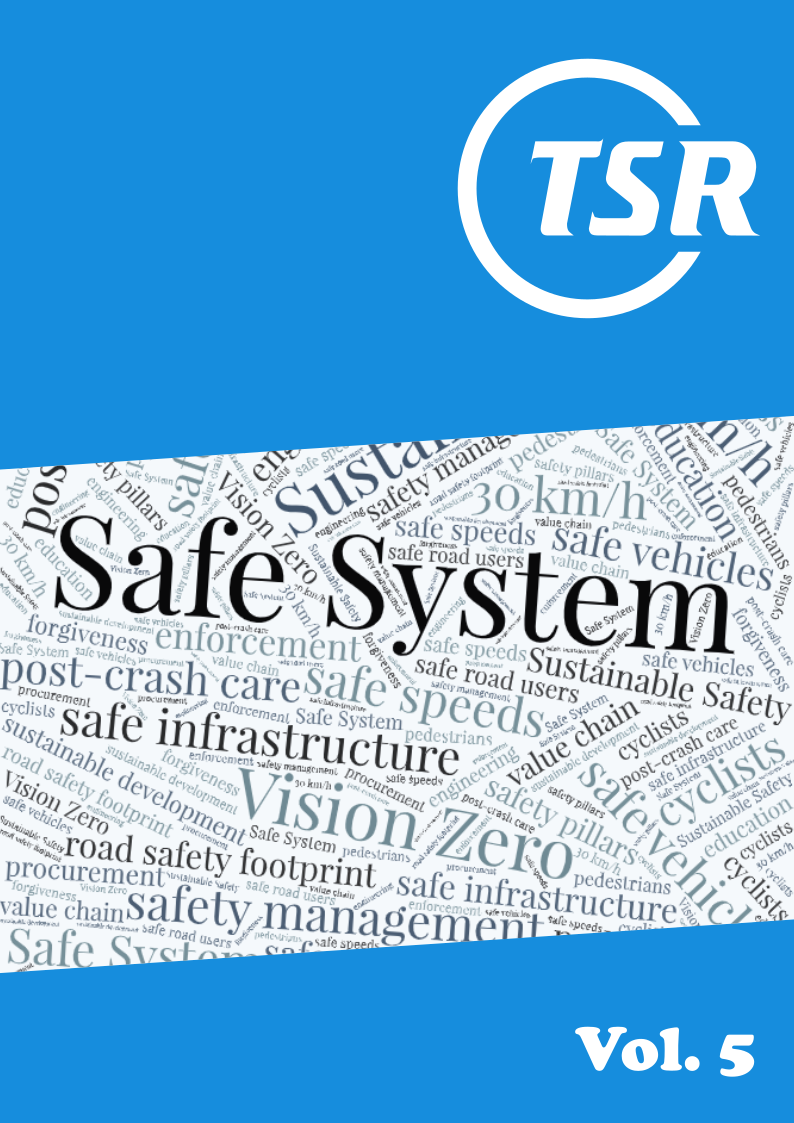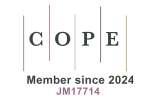Fatalities in value chains—an attempt to classify road traffic crashes in accordance with the United Nations General Assembly resolution 74/299
DOI:
https://doi.org/10.55329/mcmr2018Keywords:
fatal accident, fatal collision, fatal crash, safety footprint, value chain, work-relatedAbstract
Large corporations are today expected or obliged to report on accidental deaths and serious injuries to employed or contracted employed as a part of reporting on sustainability and workplace safety. Data about road crashes are part of such events and are therefore, but not separately, collected and presented. In Europe, 40% to 60% of all work-related accidents resulting in death has been reported to be road traffic accidents. In 2020, the Stockholm Declaration urged all corporations to report on their safety footprint including their entire value chain. The aims of the present study were to use a new definition of safety footprint and to quantify those killed as employed and at work, and those killed in a crash where the other part was at work, as so called third parties, to transports for duty with employed drivers. The Swedish Transport Administration (STA) in-depth database of fatal crashes was used, that covers all fatalities classified as road traffic related and consists of information from the police, medical journals, autopsy reports, accident analyses performed by STA, and witness statements. All fatalities excluding suicides or those caused by sickness occurring during year 2019 were investigated (n = 214). 11% (23/214) of the fatalities occurred when the killed person was at work and 16 while commuting. 37% of the fatal accidents occurred when the killed road user or the other part was at work. In total, almost half of the fatalities in the road transport system were related to work in some way when including both the fatally injured and their collision partners. A larger proportion of non-privately owned and procured vehicles was found for the vehicles of the collision partners compared to the vehicles of the fatally injured. In approximately one third of the fatal accidents a procurement of a transport service was involved. The Swedish Work Environment Authority (SWEA) identified 10 of the 23 fatalities at work investigated and none of these accidents was found to be investigated by the police as a crime related to the work environment. In conclusion, almost half of the fatalities in the road transport system in 2019 were related to work in some way, either the fatally injured or their collision partners were at work or while commuting. When including the third-party casualties, the problem becomes much bigger and more complex. In Sweden fatalities related to work are underreported, as the SWEA does not receive basic data. Efforts are needed to improve reporting of work-related road fatalities. It was found that the police did not investigate road traffic fatalities as death at workplace. It is crucial that the police start to follow the intention of regulations linked to workplace safety. If not, the possibility to collect relevant data for organizations to report on their safety footprint is limited. It is complicated to collect, classify and analyse value chain fatal crash information, mainly due to that the police do not investigate fatal road crashes as possibly work-related events. It is recommended that organizations manage their own data collection if they wish to report on their safety footprint data.
Downloads
References
DaCoTA, (2012), 'Work-related road safety', EC FP7 project DaCoTA.
ETSC, (2017), 'Tapping the potential for reducing work-related road deaths and injuries (PIN Flash 33)', European Transport Research Council.
ETSC, (2020), 'How to improve the safety of goods vehicles in the EU? (PIN Flash 39)', European Transport Research Council.
EUROGIP, (2009), 'Road risks incurred by employees in Europe', EUROGIP.
FIA, (2022), 'FIA Road Safety Index: A New Tool to Improve Road Safety', Federation Internationale de l'Automobile.
Newnam, S., R. S. Louis, A. Stephens, D. Sheppard (2022), 'Applying systems thinking to improve the safety of work-related drivers: A systematic review of the literature', Journal of Safety Research, 83, 410–417. DOI: https://doi.org/10.1016/j.jsr.2022.09.016
Newnam, S., B. Watson (2011), 'Work-related driving safety in light vehicle fleets: A review of past research and the development of an intervention framework', Safety Science, 49(3), 369–381. DOI: https://doi.org/10.1016/j.ssci.2010.09.018
ORSA, (2023), 'At-Work Road Safety'.
Rowland, B., J. Davey, J. Freeman, D. Wishart (2008), 'Development of a proactive brief road safety intervention for industry: Identifying issues associated with implementation', Journal of the Australasian College of Road Safety, 19(4), 27–35.
Stigson, H., M. Krafft, C. Tingvall (2008), 'Use of fatal real-life crashes to analyze a safe road transport system model, including the road rser, the vehicle, and the road', Traffic Injury Prevention, 9(5), 463–471. DOI: https://doi.org/10.1080/15389580802335240
Stockholm_Declaration, (2020), 'Stockholm Declaration on Road Safety', Third Global Ministerial Conference on Road Safety, Stockholm, Sweden, 19–20 February 2020.
SWEA, (2019), 'Arbetsolyckor med dödlig utgång [Work-related fatal accidents]', Swedish Work Environment Authority.
Trafikverket, (2019), 'Saving Lives Beyond 2020: The Next Steps Recommendations of the Academic Expert Group for the Third Ministerial Conference on Global Road Safety 2020', Commissioned by the Swedish Transport Administration.
Transportstyrelsen, (2020), 'Vägtrafikregistret [Register of road vehicles and driving licences]', Swedish Transport Agency.
UN, (2020), 'Improving global road safety', United Nations General Assembly.
WHO, (2020), 'Decade of Action for Road Safety 2021–2030', World Health Organization.
Ydenius, A., A. Kullgren (2019), 'Guideline for a Vehicle Purchase Policy Aiming at a Safe and Sustainable Vehicle Fleet', 26th International Technical Conference on the Enhanced Safety of Vehicles (ESV), Eindhoven, the Netherlands, 10–13 June 2019.
Published
How to Cite
Issue
Section
License
Copyright (c) 2023 Anders Kullgren, Helena Stigson, Matteo Rizzi, Claes Tingvall

This work is licensed under a Creative Commons Attribution 4.0 International License.











